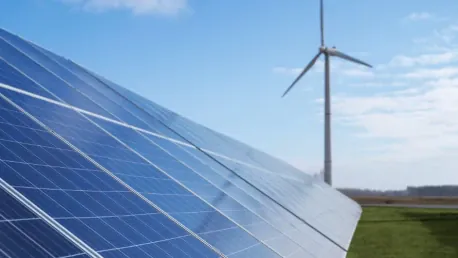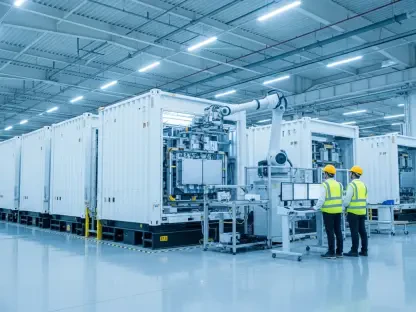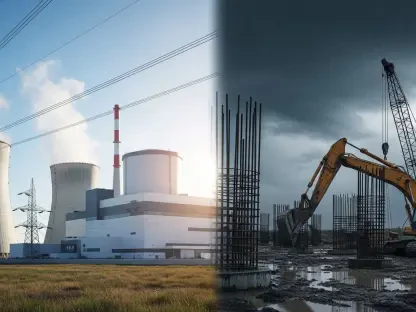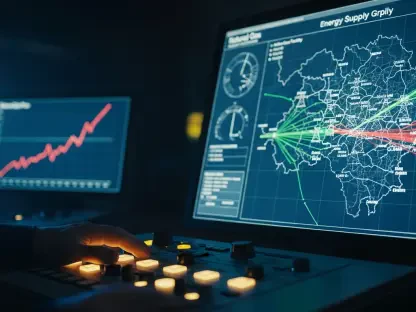Solar energy is gaining momentum as financial investments and developmental milestones in this sector continue to make headlines. Monarch Private Capital and Invenergy have recently closed a tax equity financing of $170 million for the second phase of the Samson Solar Energy Center, underscoring the growing confidence in renewable energy projects.
Progress of Samson Solar Energy Center
Initial Milestones Achieved
The Samson Solar Energy Center, located in Lamar County, Texas, has successfully completed the initial phase, generating 250MW of power. This marks a significant feat in the journey toward sustainable energy. The initial completion affirms the project’s potential and sets a solid foundation for future phases. The successful generation of 250MW not only underscores the efficacy of the project’s infrastructure but also enhances the credibility of future expansions planned for the development.
Moreover, achieving this crucial milestone illustrates the meticulous planning and execution involved in bringing such a large-scale solar project to fruition. The accomplishment stands as a testament to the concerted efforts by Monarch Private Capital and Invenergy, demonstrating their capability in steering massive renewable energy projects. All eyes are now on the continued progress as the project moves into the next phase, with an emphasis on maintaining the momentum generated thus far.
Upcoming Commissioning
By the end of the year, the projection is to commission an additional 200MW solar facility as part of the project’s second phase. This step not only highlights the advancing stages of the project but also the strategic planning involved in scaling up operations to meet energy demands efficiently. The upcoming commissioning is pivotal, given the growing demand for renewable energy sources and the industry’s quest to meet stringent environmental goals.
The second phase is expected to build on the success of the initial 250MW completion, setting the stage for what many in the industry anticipate as a landmark period for renewable energy in Texas—and, more broadly, the United States. The additional 200MW capacity underscores the aggressive yet structured approach toward meeting the ambitious target of creating one of the largest solar energy centers in the nation. As plans move forward, stakeholders are optimistic that the innovative strategies and robust infrastructure will pave the way for seamless integration of this new capacity into the existing energy grid.
Financial Investment in Renewable Energy
Tax Equity Investment Details
The $170 million investment by Monarch Private Capital and Invenergy is a crucial financial cornerstone for the Samson Solar Energy Center’s second phase. Tax equity financing has become a preferred method in funding renewable projects, ensuring necessary capital while offering tax benefits to investors. This model facilitates smooth project progression and promotes further investments in the sector. By securing significant tax equity financing, the project can mitigate financial risks and ensure a more consistent cash flow for continued development.
This method of financing, while beneficial for investors, is also instrumental in enabling the realization of substantial renewable energy targets. Tax equity finance ensures that projects like the Samson Solar Energy Center can access the required capital without facing significant upfront financial burdens. Furthermore, this financing strategy makes renewable energy investments more attractive by providing a reliable return on investment coupled with tax incentives, which can have a ripple effect in terms of encouraging more funding avenues for other renewable projects across the nation.
Implications for Investors and Market
Investments like these signify strong market confidence and attract more stakeholders into the renewable energy arena. The strategic financial management displayed here serves as a blueprint for future projects, potentially influencing market trends and investment patterns in renewable energy. The infusion of $170 million into the project not only bolsters its financial standing but also sends a clear signal to the market about the viability and attractiveness of large-scale solar investments.
This significant investment can also catalyze the broader renewable energy sector by demonstrating the scalability of solar projects and their potential for delivering consistent returns. As large financial institutions recognize the benefits and stability associated with renewable investments, a paradigm shift is likely to occur, with increased capital flow towards sustainable energy ventures. The momentum generated from such high-profile financial commitments can potentially reshape the investment landscape, making renewable energy projects more mainstream and integral to diversified investment portfolios.
Trends in the Solar Energy Industry
Rise of Large-Scale Solar Projects
Across the globe, there’s a noticeable rise in the development of large-scale solar projects. Noteworthy among them is the 1.5GW Al Ajban solar plant financed by EDF Renewables, KOWEPO, and Masdar. Projects of this magnitude exemplify the increasing adoption of solar energy on a grand scale, driving the transition towards more sustainable energy sources. The Al Ajban project, with its significant capacity, underscores a global trend toward embracing massive renewable energy ventures that can substantially contribute to reducing carbon footprints.
The increasing scale of solar projects indicates a strategic shift toward maximizing energy output while leveraging advancements in solar technology. These large-scale projects not only provide significant energy solutions but also serve as benchmarks for efficiency and innovation within the industry. By implementing cutting-edge technology and optimizing design and infrastructure, these projects demonstrate that renewable energy can effectively compete with traditional energy sources, both in terms of output and cost-efficiency.
Global Partnerships and Collaborations
Collaborative efforts between international energy companies indicate a shared commitment to advancing renewable energy infrastructure. Such partnerships not only bring in diverse expertise but also merge resources, fostering innovation and driving down costs associated with large-scale projects. The joint ventures seen in the development of expansive solar plants underline the crucial role of international collaboration in overcoming the challenges of transitioning to clean energy.
These partnerships are vital for pooling resources, knowledge, and technological capabilities, enabling more effective and efficient project execution. By working together, companies can tackle complex issues such as supply chain optimization, cost management, and regulatory compliance more effectively. The fusion of different perspectives and expertise allows for more innovative solutions, which can significantly enhance the success and scalability of renewable energy projects. This collaborative approach is poised to play a crucial role in the ongoing global efforts to combat climate change and promote sustainability.
Policy and Regulatory Influences
Section 301 Tariffs and Solar Materials
The solar industry is also navigating through significant regulatory influences. The U.S. Section 301 tariffs, proposing a 50% duty on solar wafers and polysilicon, bring forth both challenges and opportunities for the industry. While tariffs could increase costs, they might also encourage domestic production and innovation within the U.S. solar supply chain. The potential duties on crucial solar components could reshape the industry by prompting shifts in sourcing and production strategies.
Navigating these regulatory measures requires strategic foresight from companies, as the increased costs can affect overall project feasibility and financial planning. However, these tariffs could also present an opportunity for U.S.-based manufacturers to fill the gap, fostering a more resilient and self-sufficient solar supply chain. By incentivizing local production, the tariffs might help mitigate risks associated with international supply chain disruptions, thereby enhancing the stability and reliability of solar energy projects domestically.
Impact on Supply Chain and Costs
Navigating these regulatory changes is crucial for stakeholders. The potential impact on the supply chain and overall costs makes it imperative for companies to develop adaptive strategies. These regulatory environments will likely shape future investments and operational approaches within the solar industry. Companies must assess the long-term implications of tariffs and adjust their supply chains accordingly to maintain competitiveness and project viability.
Adaptive strategies may include diversifying suppliers, investing in domestic production capabilities, or advancing technological innovations to offset increased costs. Companies may also need to engage in lobbying and advocacy to influence regulatory decisions and advocate for policies that support the sustainable growth of the solar industry. Given the dynamic nature of regulatory landscapes, proactive and flexible approaches will be key to navigating the complexities and ensuring the continued expansion of renewable energy projects.
Future of Renewable Energy Projects
Economic Growth in the Solar Sector
The investment in the Samson Solar Energy Center’s second phase is a testament to the economic potential that the solar sector holds. As more projects secure substantial financial backing, the renewable energy market is poised for exponential growth, creating new job opportunities and stimulating economic development. This burgeoning sector is not only pivotal for sustainable energy solutions but also indicative of the future economic landscape shaped by renewable innovations and collaborations.
Emphasizing economic growth, the continued investment in solar energy projects is a crucial driver for local and national economies. These projects create numerous job opportunities across various stages of development, from construction to operation and maintenance. The ripple effects of such investments extend beyond the energy sector, fostering ancillary industries and contributing to a more robust economy. The increased focus on renewable energy also signals a strategic shift toward a more sustainable and environmentally friendly economic model, aligning with global efforts to combat climate change and reduce carbon emissions.
Technological Advancements and Sustainability
Solar energy is gaining significant traction as visible financial investments and developmental progress continue to capture public and industry attention. A notable recent development in this dynamic sector is the announcement that Monarch Private Capital and Invenergy have successfully secured tax equity financing amounting to $170 million. This generous funding is specifically earmarked for the second phase of the ambitious Samson Solar Energy Center project.
This milestone illustrates the increasing confidence and trust that investors and stakeholders place in renewable energy initiatives. Renewable energy, particularly solar power, continues to demonstrate its potential as a viable and sustainable solution to address growing energy demands and environmental concerns. The second phase of the Samson Solar Energy Center represents a broader commitment to harnessing the sun’s power to produce clean, renewable energy, which is a critical step forward in the transition from fossil fuels to greener alternatives.
The accomplishment of securing substantial financing for such projects highlights the robust interest in and future potential of the solar energy sector. This momentum is crucial as it signifies not only technological advancement but also a multi-dimensional approach to fostering sustainable development. Commitments like these set the stage for accelerated growth and improved technologies in solar power, which ultimately contribute to a more sustainable and energy-efficient future for everyone.









